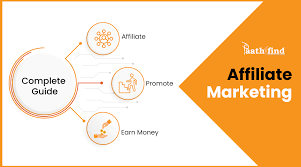Using keyword research to optimize your content for search engines is an effective way to increase organic traffic to your affiliate website. Here’s how you can leverage keyword research to optimize your content:
- Identify Relevant Keywords: Start by conducting keyword research to identify the keywords and phrases that are relevant to your niche and align with the products you promote. Use keyword research tools like Google Keyword Planner, SEMrush, or Moz Keyword Explorer to discover keywords with a good search volume and moderate competition.
- Long-Tail Keywords: Target long-tail keywords, which are more specific and usually have lower competition. Long-tail keywords often indicate higher user intent and can lead to more targeted traffic and conversions. For example, instead of targeting a broad keyword like “fitness equipment,” you can target a long-tail keyword like “best home gym equipment for small spaces.”
- Content Planning: Plan your content around the keywords you have identified. Create a content calendar or outline that incorporates these keywords strategically. Each piece of content should focus on a primary keyword and include related secondary keywords.
- On-Page Optimization: Optimize your content for the target keywords. Include the primary keyword in the page title, headings (H1, H2, etc.), meta description, URL, and within the content itself. However, ensure that keyword usage is natural and doesn’t compromise the readability or quality of your content.
- Content Structure: Structure your content in a way that makes it easy for search engines to understand. Use headings and subheadings to break down your content into logical sections. Incorporate bullet points, numbered lists, and relevant images to enhance readability and engagement.
- Quality and Relevance: Create high-quality, informative, and relevant content that delivers value to your audience. Search engines prioritize content that meets user intent and provides comprehensive information. Craft in-depth product reviews, guides, tutorials, and informative articles that address the questions and needs of your target audience.
- User Intent: Understand the intent behind the keywords you are targeting. Are users looking for information, product recommendations, or comparisons? Ensure that your content aligns with the intent behind the keywords to provide a satisfying user experience.
- Content Length: Aim for comprehensive and substantial content. While there is no strict rule for content length, in-depth and well-researched articles tend to perform better in search engine rankings. However, focus on quality rather than filler content. Ensure that every piece of content provides value and satisfies the user’s search query.
- Internal Linking: Incorporate internal links within your content to connect related pages on your website. This helps search engines understand the structure and hierarchy of your website and improves user navigation. It also distributes link authority throughout your site.
- Monitor and Adapt: Regularly monitor the performance of your optimized content. Use web analytics tools like Google Analytics to track keyword rankings, organic traffic, and user engagement metrics. Analyze the data to identify areas for improvement, such as updating underperforming content or targeting new keywords.
Remember, keyword optimization is just one aspect of SEO. While it’s important to optimize your content for search engines, it’s equally crucial to provide value to your audience. Strive to create high-quality, informative, and engaging content that addresses the needs of your target audience. By combining keyword research with quality content creation, you can attract organic traffic and increase the visibility of your affiliate website.
SHARE
